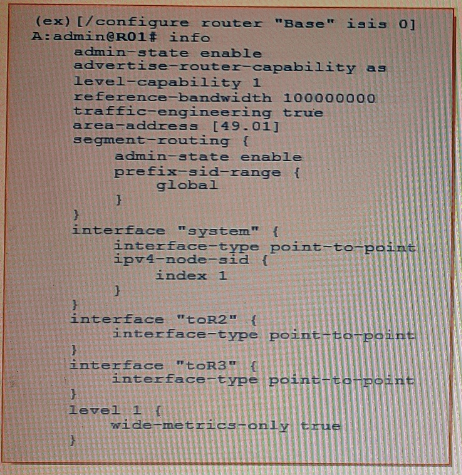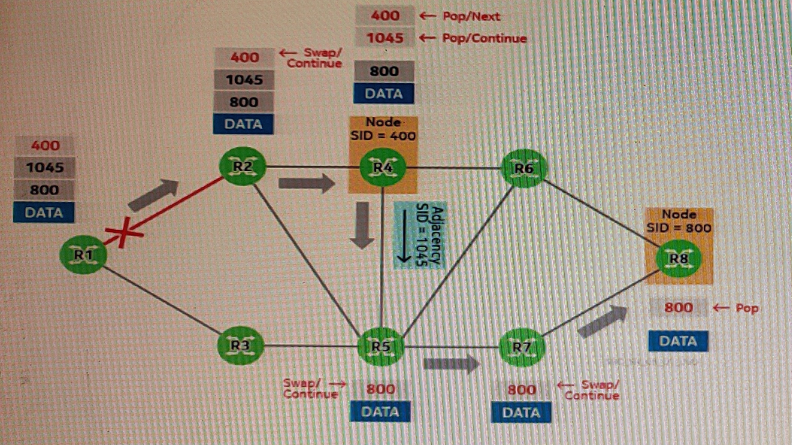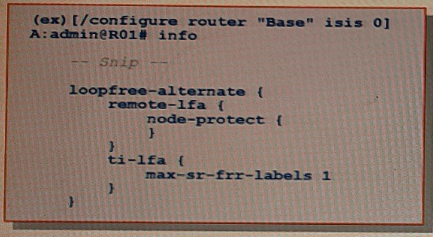Master Nokia 4A0-116 Exam with Reliable Practice Questions
Based upon the exhibit, which of the following statements regarding the configuration is FALSE?

Correct : A
Start a Discussions
Which of the following statements about segment routing fast re-route is FALSE?
Correct : C
On a Nokia 7750 SR, R-LFA and TI-LFA cannot be enabled independently; they must be enabled together. The parameter 'max-sr-frr-labels' limits the number of labels that R-LFA can add to the data packet encapsulation.
Start a Discussions
The exhibit presents packets being transmitted inside an LSP's multi-segment primary path going from router R1 to router R8. The LSP also has a standby secondary path, and Seamless-BFD has been enabled on the primary path. The link between routers R1 and R2 fails, and fast re-route (FRR) is triggered. As a result, router R1 forwards the packets to router R3 and adds the proper FRR encapsulation to reach which router?

Correct : B
Start a Discussions
The exhibit shows the fast re-route configuration on router R1, in which both R-LFA and TI-LFA have been enabled. Assume that there are multiple potential backup paths for a given prefix. Which of the following options will router R1 use?

Correct : D
The exhibit shows that both R-LFA and TI-LFA have been enabled on router R1. R-LFA (Remote Loop-Free Alternate) is a method that is used to protect the active segment of a tunnel, and it allows the router to find a backup path that coincides with the path that will become active after IGP reconvergence. TI-LFA (Topology Independent LFA) is a method that is used to protect an end-to-end multi-segment tunnel, it allows the router to find a backup path that does not rely on the IGP topology, but on the segment routing topology.
With R-LFA and TI-LFA enabled, router R1 will use a D-LFA (Dual-Loop-Free Alternate) path, which is a combination of both R-LFA and TI-LFA, this path will coincide with the path after IGP re-convergence.
A standard LFA, R-LFA, and D-LFA which do not coincide with the path after IGP re-convergence are not the options.
Start a Discussions
To create a flex-algo instance in a network, which of the following configuration steps is mandatory?
Correct : B
To create a flex-algo instance in a network, it's mandatory to configure at least one router in the network to create and advertise the flex-algo definition, This is the first step in creating a flex-algo instance, and it's done by defining the flex-algo instance and its properties on one or more routers in the network.
The other steps are important to fine-tune the flex-algo instance, but not mandatory to create it.
Configuring the proper values for the shared-risk link groups (SRLGs) that will define the flex-algo topology.
Specifying whether the LSP paths will be computed locally or by an external path computation element (PCE).
Configuring LSPs between every pair of PE routers.
Start a Discussions